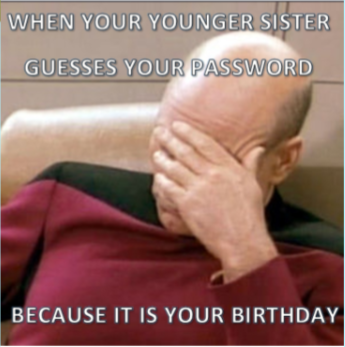Every day, our Education Team are in schools across the country talking to children, young people, teachers and parents about their experiences online and how they can stay safe on the internet.
In this series of blogs we look to answer some of the most frequently asked questions from these sessions. This blog is for young people, looking at personal information online, the ways in which you may share too much, and what the impact of this can be.
What is personal information?
When you post a photo, video or information online, it’s worth thinking about the type of information that you may be sharing within this.
Personal information is like a jigsaw puzzle, where each piece of information you share can be added together and once you look at the bigger picture you may actually be sharing more about yourself than you would have wished to.
Personal information can include:
- Your full name
- Age or date of birth
- Address
- School name
- Phone number
- Current location or where you will be at a specific time
How may I be giving this information away?
A lot of personal information may be hidden in photos and videos, this includes:
- School Name: shown by the school uniform worn in pictures
- Home address: shown by house numbers or street names in the background of photos
- Date of birth: either in the background of pictures or via birth announcements and birthdays.
- Phone numbers: shown on documents in the background of pictures or on the collar of a family pet
Before posting a photo online check it for any personal information that you may be inadvertently sharing.
A lot of personal information can also be given away in conversation.
Somebody online may ask you directly for details about you and your life, and it’s important to carefully consider the consequences of answering them. Messaging your telephone number to a friend from school who you trust could have very different consequences to messaging your telephone number to someone you only know online, who is still a stranger. It’s important to remember that you can say no to someone asking you for these details about yourself, and that you can also report this person on the social media or gaming sites that you use.
If someone is behaving in a way which is worrying you online, remember that it is never too late to go and speak to an adult that you trust.
3 surprising ways you may be sharing personal information
- Group chats on WhatsApp – when you are added to a group chat on Whatsapp your picture, name and phone number can be visible to the rest of the people in this chat. You can change your settings so that only your contacts are able to see your profile image and you can also talk to your friends and ask that you are only added to group chats with people that you know.
- Bios on Instagram – It is worth noting that your profile picture and bio are always publically viable on Instagram, even if you have a private account. You can set your Instagram to private to ensure the no one is seeing personal information in your general photos, but keeping personal information out of your bio is the best way to go.
- Memes you share – Some memes, such as ones looking at password strength (like below) or memes created about your school or class, can actually give away more information than you intend to.

Why does it matter?
In a recent education session we were given the example of a pupil sharing that they were going to be in the front row at a gig at their local park.
They wanted to know why sharing this sort of personal information could be risky as they were going to be in a very busy and public place.
Although it is unlikely that somebody online would seek you out using this information, it is still important to think about how you manage risk online
The information you share can let people build up an image of who you are and where you spend your time, it may even allow them to see links and patterns in your behaviours.
Our top tips
- Don’t give your personal information to people you don’t know
- Think about personal information offline as well as online: If you wouldn’t say something to a stranger in the street, don’t say it to a stranger online
- Think about timings – save posts that reveal your location until after you have left the place where the photo was taken
- Think critically! Think about all of the information you post online and what image this creates about you
- Speak to an adult if anything worries you online or if anyone tries to persuade you to share your personal information


